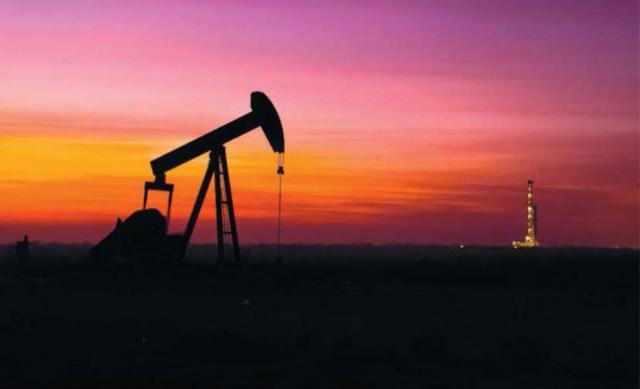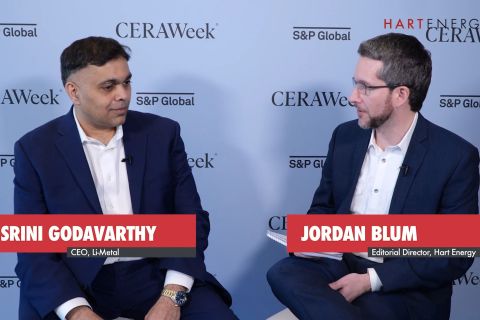
(Source: Exxon Mobil Corp.)
[Editor's note: A version of this story appears in the April 2020 edition of Oil and Gas Investor. Subscribe to the magazine here.]
Let’s go straight to the tape. Rig count may now fall precipitously in a post-COVID-19/OPEC+ world, but the hidden narrative in the land drilling market, and for the Permian Basin, in particular, involves Exxon Mobil Corp.
Exxon Mobil had been the nation’s leading rig employer at 69 units on average year-to-date 2020, double the tally for EOG Resources Inc., the nation’s second most active rig employer.
In the Permian, a majority of E&Ps are bunched in the 5% to 6% share of regional rig employment and have been since early 2018. In contrast, Exxon Mobil has persistently added rigs and grown regional market share beginning with a 6% share of Permian rig activity in first-quarter 2018, moving to a 9% share by first-quarter 2019, and currently holding 14% share year-to-date 2020.
RELATED:
In The Shadow Of Oil And Gas Giants (Oil and Gas Investor January 2020 issue)
On a numeric basis, Exxon Mobil increased its rig count from 25 units in the first quarter of 2018 to 56 units year-to-date 2020, more than doubling the rig employment on behalf of Diamondback Energy Inc. and Pioneer Natural Resources Co., the Permian’s next two largest players. Diamondback and Pioneer each hold a 6% rig employment share in 2020, or 23 rigs each. Add Exxon Mobil, and those three public companies account for 26% of Permian rig employment.
While Exxon Mobil traditionally operates counter-cyclically to the macro environment, the company’s Permian efforts stand out not just in the Permian but in contrast to every regional market in the U.S. where the company has been the leading onshore rig employer for several years. The company’s rig employment peaked during the second and third quarters of 2019 at 76 units, again roughly double EOG Resources Inc.’s second-place rig tally.
Exxon Mobil activity has migrated from a concentration in the Midland Basin in 2017 to a major focus in the northern Delaware Basin, where the size of its activity dwarfs all other players with a 25% share of rig employment.
The Permian transformation has a long history. Exxon Mobil quietly began expanding its Permian presence in 2014 in a series of transactions that initially added 135,000 operated Midland Basin acres prospective for Spraberry and Wolfcamp.
The integrated giant further expanded that position across the Midland and Delaware basins with an additional 22,000 acres pre2017 when the company and its subsidiary, XTO Energy Inc., was the seventh-largest acreage holder in the Permian. Interesting at the time, but hardly earth-shaking.
Then came the $6.6 billion acquisition of the Bass family acreage in early 2017 that established a large contiguous position of 227,000 acres in the heart of New Mexico’s Delaware Basin. At the time, Exxon Mobil was running 19 rigs, including 14 in the Midland Basin.
Its Bass acquisition was transformative. First, it added an estimated 6 Bboe in resource in place, including 3.4 Bboe in the Delaware Basin. The deal involved an upfront payment of $5.6 billion in stock, now worth about $3.6 billion if the Bass family retained all Exxon Mobil’s shares, with contingent cash payments of up to $1 billion to be paid beginning in 2020.
In March 2019, Exxon Mobil debuted plans to grow Permian production by 80% to 1 MMboe by 2024 following the doubling of production in 2018. The new plan will push its production back above 4 MMboe/d following a steady depletion-related decline in the company’s global upstream output.
The company’s master plan in the Permian is built on an integrated approach tying Delaware Basin production via pipelines, including an agreement with Summit Midstream Partners LLC, to the Exxon Mobil petrochemical complex on the Gulf Coast. The company is pushing lateral lengths beyond 15,000 feet in the Delaware in concert with centralization in processing facilities in order to lower development costs.
Exxon Mobil’s half decade-long acquisition spree has now provided the company with a net 1.8 million-acre position in the Permian. It remains one of the major narratives over the last half-decade for the Permian and, indirectly, the U.S. tight formation liquids play. The company is now the leading rig employer (13) in the southern Delaware Basin and the second most active rig employer (18) in the Midland Basin.
The oil price collapse and cuts to capex and rig count will alter the scale of Permian activity. The question is whether it will change the narrative.
Recommended Reading
Eversource to Sell Sunrise Wind Stake to Ørsted
2024-04-19 - Eversource Energy said it will provide service to Ørsted and remain contracted to lead the onshore construction of Sunrise following the closing of the transaction.
Exclusive: Building Battery Value Chain is "Vital" to Energy Transition
2024-04-18 - Srini Godavarthy, the CEO of Li-Metal, breaks down the importance of scaling up battery production in North America and the traditional process of producing lithium anodes, in this Hart Energy Exclusive interview.
High Interest Rates a Headwind for the Energy Transition
2024-04-18 - Persistent high interest rates will make transitioning to a net zero global economy much harder and more costly, according to Wood Mackenzie Head of Economics Peter Martin.
Scotland Ditches 2030 Climate Target to Cut Emissions by 75%
2024-04-18 - Scotland was constrained by cuts to the capital funding it receives from the British government and an overall weakening of climate ambition by British Prime Minister Rishi Sunak, said Mairi McAllan, the net zero secretary for Scotland's devolved government.



